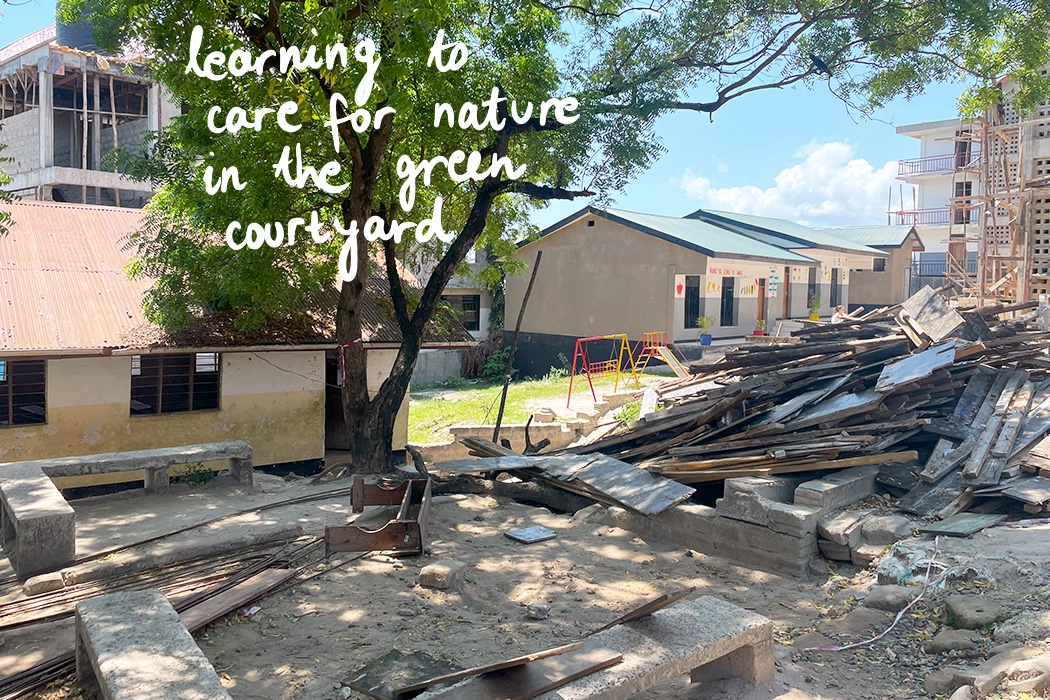

The project was a partnership between Mapinduzi Primary School (students and teachers), the Centre for Community Initiatives, and Kinondoni Municipality, located in the Kigogo Ward. The primary driver was to engage students in environmental action and solve the school’s soil erosion and risk of floodings. Through a participatory process, students helped design and build vegetable gardens, a tree nursery, and a rainwater harvesting system. The garden provided a space for students, teachers, and families to engage with the courtyard, relax, and connect with gardening activities. However, the project suffered a catastrophic setback when the contractor in charge of the new school activities dumped construction waste directly onto the garden, destroying it and demonstrating a severe lack of inter-agency coordination. The rainwater tank remains functional, and teachers have expressed interest in restoring the space. Students have been especially affected, having lost a place that once supported learning, care, and a sense of belonging.
Working towards justice
The project’s initial phase was a model of youth participation, actively involving students in the design and construction of their own schoolyard. The urban garden supported environmental education, student wellbeing, and community-led adaptation to local climate risks. This collaboration initially recognised students as capable partners in developing environmental solutions. However, the subsequent destruction of the garden by a municipal act represents a profound lack of recognition for their labour and ownership, creating a powerful lesson in systemic injustice. While the garden was designed to distribute multiple benefits, such as flood protection, a safe play space, and hands-on learning, its destruction resulted in a negative distribution of harm, including the loss of a valuable community asset and a deep sense of disillusionment. Although the community did not contest the demolition, prioritising new buildings over disagreements with municipal authorities, the absence of consultation reflects the limited decision-making of those involved. The remaining infrastructure, including functioning gutters and the water tank, still holds potential for reactivating the space. The opportunity to restore it is also an opportunity to reaffirm the role of youth in shaping greener, healthier, and more inclusive public spaces.
The potential to benefit people and nature
In its original design, the initiative was an excellent example of a multi-functional, nature-based intervention. It used green infrastructure (gardens, trees) and sustainable water management (rainwater harvesting) to solve the societal challenge of flooding while providing environmental, educational, and social benefits, demonstrating how a schoolyard can become a living system that builds resilience. It cooled the courtyard, absorbed excess water, and gave students a meaningful way to interact with the natural world. It helped manage stormwater, reduced erosion, and offered a quiet, shaded space for learning and rest, allowing a relationship of harmony with nature. The unrealised potential of this project is immense but can only be achieved by first addressing the systemic failure that led to its destruction. The site could be restored, becoming a powerful demonstration of resilient design and, more importantly, a case study in establishing respectful collaboration between communities and municipal authorities. Rebuilding the garden would not only restore its ecological functions but could also be a process of restorative justice, advocating for policies that protect community-led green spaces from such top-down destruction in the future.
With the rainwater harvesting tank and gutter systems still in place, there is strong potential to rebuild and even expand the initiative by integrating natural systems into the school’s courtyard space. Opportunities include adding benches and shade for students, planting more trees, and reviving environmental learning as part of the school’s curriculum. The garden’s original purpose remains urgent: to create safe, green spaces for students to learn, care for the environment, and experience nature in their daily lives. Reclaiming and protecting this space would show that schools can be centres not just of education, but of stewardship and collective care.



